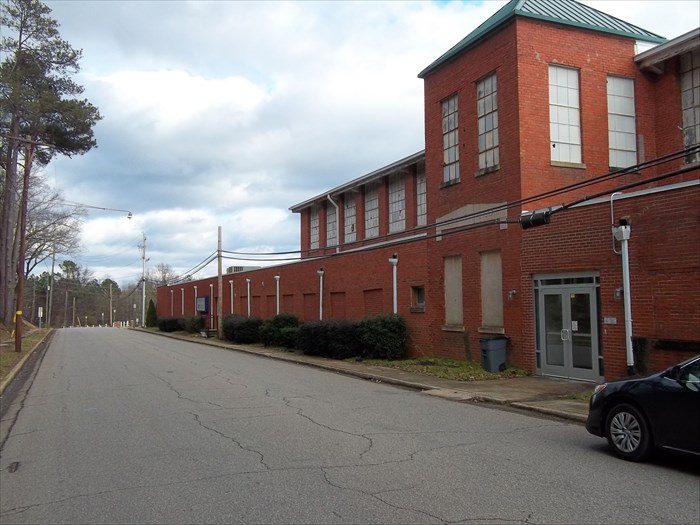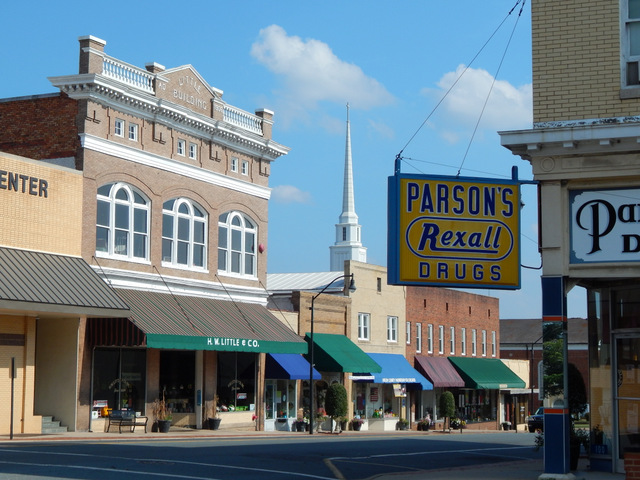Wadesboro, NC
Wadesboro partnered with a regional community college to convert an abandoned textile mill complex into a tremendous economic asset. The Lockhart-Taylor Center includes space for a business incubator, entrepreneurship training, and public meeting space.
| Population | 2020 | 5,273 |
| Median Household Income | 2020 | $25,354 |
| Poverty Rate | 2020 | 35.9% |
| Proximity to Urban Center | 52 miles to Charlotte, N.C. | |
| Proximity to Interstate Highway | 50 miles | |
| Case Study Time Frame | 1998-2007 | |
| Municipal Budget | FY2020 | 8.6 million |
The Town of Wadesboro partnered with the South Piedmont Community College (SPCC) to develop a business incubator and a public meeting space in an abandoned mill building. In 1998, the local com- munity college purchased the West Knitting Mill building in downtown Wadesboro to house its growing continuing education program. Shortly after purchasing the mill building, the college decided to dedicate the unused portions of the building to meet other community needs, including a business incubator and a space for public meetings. The resulting Lockhart-Taylor Center is catalyzing economic development in Wadesboro by providing space for training, entrepreneurial incubation and public meeting space in a single location.
What are the lessons learned from this story?
Community colleges can be catalysts for economic revitalization. Supporting economic development is a central component of the mission of most community colleges in North Carolina, just as it is at South Piedmont. As partners or even leaders in local and regional economic development, these colleges can provide resources, infrastructure and knowledge base often lacking in small towns.
Rural residents are often an untapped source of financial capital. The per capita income for Anson County is $14,853, nearly $7,000 less than the national average. Yet SPCC raised more than $700,000 from local contributors for the renovation of the West Knitting Mill. The lesson here is that small, rural communities should not be leery of looking to local residents as significant contributors to community projects. Moreover, by involving the community in the mill renovation process, SPCC fostered a sense of ownership of the building — and its economic development outcomes — by local residents. “Thousands of Anson County folks worked at this mill,” Sparger said. “Renovating it was about more than making it look nice. We were tying it back to the history and culture of our community.”
Lockhart Taylor Center photos courtesy of Roger C Pate.




